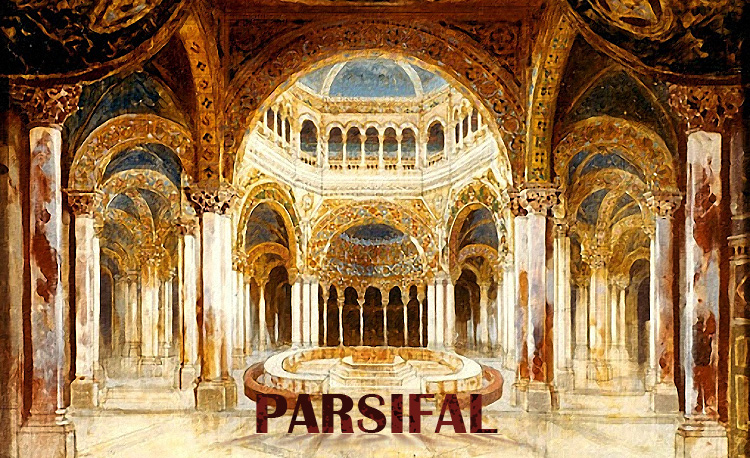Parsifal is Wagner's last work. The opera premiered at Bayreuth on July 26, 1882 under the direction of conductor Hermann Levi. It was performed sixteen times that first year. It was the most carefully prepared première of an opera in history. The 23 soloists and alternates, the 107 orchestra players, and the 135 members of the chorus had been given the score a year before. European musical royalty all made the pilgrimage to hear Wagner's new work. Franz Liszt, Camille Saint-Saëns, Anton Bruckner and Léo Delibes were all present. The original sketches for the sets and costumes were designed by German-Russian painter Paul von Joukowsky, who based his design for Act One on the Cathedral of Siena, and for Klingsor's Magic Garden, in Act Two, on the gardens of the Palazzo Rufolo in Ravello.
After Wagner's death, this production acquired mythic proportions. Although the sets had become increasingly dilapidated and dangerous to the performers, conservative Wagnerians were unwilling to replace them because this was the very scenery that the Master had observed with his own eyes. The sets were finally replaced at the 1934 Festival. The production had been performed 205 times in 27 Festivals. |

